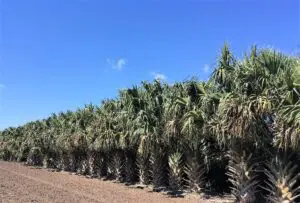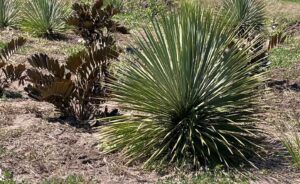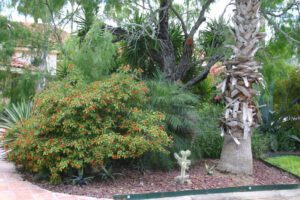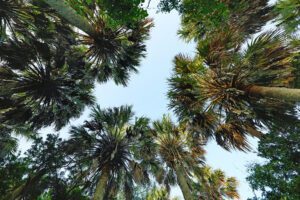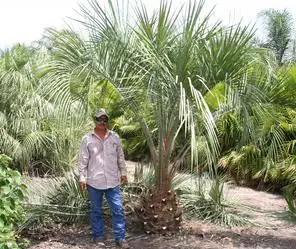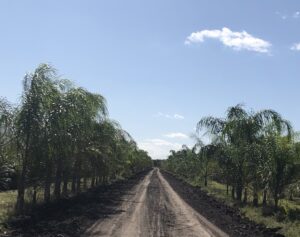Cold Hardy Palms
A little information on Texas Sabals One palm native to the Rio Grande Valley is the Texas Sabal. Seen in many brush lines and native brush in the valley, this palm has a stockier trunk than the Florida’s cabbage palms. The leaf margins (boots) tend to remain on the trunk for many years, giving it…
Read MoreToday was our first opportunity to get out in the fields and get a good look at the damage last weeks arctic blast did to our fields. Even though the three rows pictured above are all Date palms, one is canarensis and the other two are roebellini. Clearly, roebellini is more cold sensitive. They are…
Read MoreIt looks like our temperatures could dip below freezing for 3 – 5 hours early Saturday morning. With temperatures at 30 – 32 degrees for just a few hours, we shouldn’t see much plant damage – only our tender tropicals will be effected. Just this week, I noticed new growth on firebush shrubs that…
Read MoreTexas Sabal is the one palm native to the Rio Grande Valley. Twenty years ago, the last large native stand was in Brownsville but they are making a come-back. Large specimens can be seen in many of the brushlines and native brush. It looks similar to Florida’s cabbage palm but with a stockier…
Read MoreI have never considered adding a pindo palm to my landscape because of the heavy clay that I live (and garden) in. But Alvin’s latest “freeze fix” has me reconsidering. One of Alvin’s friends, who had suffered suffered freeze damage a few years ago, asked about some cold-hardy alternatives. He said PINDO – and she…
Read MoreTexas has just been through its coldest winter in many, many years – and if you believe the prognosticating of Punxsutawner Phil, we still have three more weeks of it. There was even measurable snow in the Rio Grande Valley! Many palm trees did not survive the winter and we know you want to…
Read More
